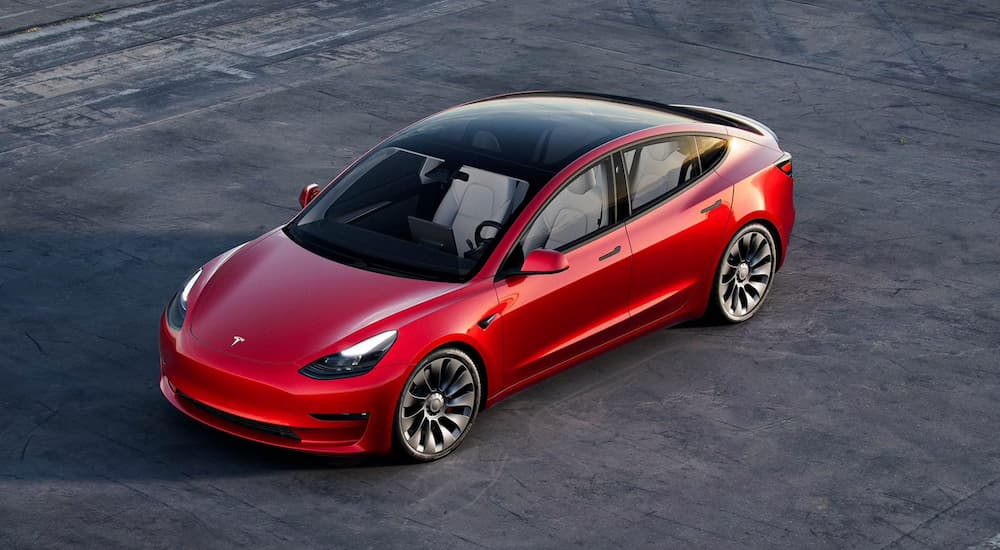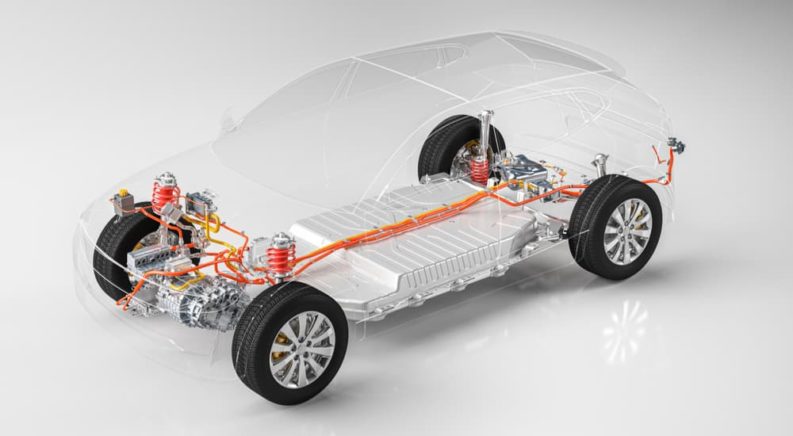RegLong the stuff of science fiction, electric vehicles have finally carved out their place in the automotive scene. While the growth is largely tied to a more eco-conscious consumer base, there are also a number of cutting-edge technological components that have allowed electric vehicles to edge their way into the mainstream. Lithium-ion batteries get all the headlines – and for good reason – but there are a number of unsung technologies under the hood that have made electric vehicles a more affordable and practical choice than ever before. From advanced computer control systems that seamlessly route power to the public charging stations that make longer trips possible, it takes some creative solutions to produce a viable alternative to gas-powered vehicles, and it doesn’t get much more creative than regenerative braking.
You’ve probably heard the term and can probably figure out the basic function based on the name alone, but what exactly is regenerative braking? How does it work, and why is it so vital to the growth of the electric vehicle sector? At its most basic, regenerative braking simply means capturing the energy normally lost when applying a vehicle’s brakes and feeding it back into the battery to improve range, but that’s just hitting the surface. Let’s take a deeper dive into this unheralded tech, how to get the most out of it and what it means for the future of green transportation.

Building Better Brakes
First off, why is regenerative braking so important? You won’t find the technology on many of today’s fossil fuel-powered vehicles, but it is currently used on all hybrid and electric vehicles in the U.S. Simply put, when you’re trying to squeeze every watt possible out of the battery, any energy loss is a waste. Traditional gas and diesel-powered vehicles face the same brake-related energy loss, but it can’t be easily converted back into a usable form of power (more on that later), and such loss is less of a concern in vehicles that can be quickly topped off at any gas station you come across. The same cannot be said of electric vehicles, at least given the current technology. While public charging stations are becoming a more common sight all the time, they still lag far behind the ubiquity of your run-of-the-mill gas stations.
Even if one can be found, recharging is a decidedly slower process than your typical two-minute fill-up. The public Tesla Supercharger charging stations take around 20 minutes to charge a Tesla Model S to 50 percent and over an hour to get to 100 percent, requiring more than a little planning for those looking to take longer journeys. A Level 2 home charger is an even slower option, often taking half a day to achieve 100 percent charge. Finally, Level 1 charging just isn’t a practical choice for drivers looking to go electric with their everyday vehicle, as it can take over two days to fully charge a larger EV battery.
These figures can start to take a little shine off a possible all-electric future and go a long way in illustrating the importance of regenerative braking in today’s electric vehicles. If these electric vehicles ever want to dethrone their gas-powered forerunners as the primary means of individual transportation, they need to be just as convenient. Consumers might say they want greener vehicle options, but research has found that frustration with public charging options has stymied the sector’s growth, and in some cases, even reversed it. A recent study published by two University of California Davis researchers found that between 2012 and 218, 20 percent of California EV owners switched back to gas, and a lack of viable charging options was cited as the main reason.
So How Does It Work?
The science behind regenerative braking is based on one of the founding principles of modern physics: The First Law of Thermodynamics. While you don’t need to be Einstein to parse out the theory, that wild-haired physicist did coin one of the more succinct explanations of the concept when he said, “Energy cannot be created or destroyed, it can only be changed from one form to another.” So how does this principle play out in today’s electric vehicles?
In traditional vehicles, liquid fuel provides the system’s potential energy. When you start up the engine and hit the gas, this potential energy is converted to kinetic energy inside the engine’s combustion chambers, driving the pistons that turn the crankshaft and deliver power to the axles. When you hit the brakes and create friction on the wheel, all that kinetic energy is dissipated in the form of heat, which radiates off the brake rotors until they’re cool. These friction-based brakes represent the traditional – and rather wasteful – method of slowing a vehicle, which hasn’t changed much since the days of Fred Flintstone and his callused feet.
The energy you created when you pressed the gas pedal never disappeared; it was routed through the drivetrain as part of the combustion process and converted to heat, noise and light when the brakes were engaged. It’s never destroyed; it just exists in new, useless forms. Regenerative braking in electric vehicles capitalizes on this otherwise lost energy by converting it back into electrical energy. The same motors that drive the EV’s wheels by converting electricity into mechanical energy double as generators when the brakes are engaged, reversing the process and topping off the battery every time you slow down.
Through this process, as much as 70 percent of the energy lost during normal braking can be captured and converted back into battery power: a figure that will give any range-anxious EV driver a boost of confidence. It’s important to mention that regenerative brakes are never relied on to provide all of a vehicle’s stopping power. All vehicles with regenerative brakes also have a braking controller system that can call on traditional disc brakes for those times when the required stopping power exceeds the capacity of the regenerative system’s electrical generator.
In addition to increasing efficiency, many vehicles’ regenerative braking systems also enable an entirely new style of driving. Since the system’s generators are engaged as soon as a driver lifts their foot off the pedal, the car begins to slow down to some degree before the brakes are even touched. If you plan ahead and avoid sudden stops, this “one-pedal driving” method can eliminate the need for brakes almost entirely. Brands like Tesla have even catered to this style by offering distinct levels of regenerative braking, allowing you to tailor the vehicle to your preferred driving style.

Looking Forward
But regenerative braking holds more advantages than increased efficiency and eerily-cool brake pads. Because they’re often not being used as the primary means of slowing a vehicle, the traditional disc brakes and brake pads on EVs typically last much longer than in vehicles without regenerative braking – tens of thousands of miles longer in some cases. This is part of the reason why routine maintenance costs for EVs are much lower than for gasoline vehicles.
Some automakers have even started experimenting with regenerative braking on traditional gas-powered vehicles, though it’s a tricky proposition as it’s difficult to un-burn gasoline. Instead, brands like Mazda use a system of electrical capacitors to capture energy normally lost through braking, then employ that energy to power accessories like air conditioning, speakers, and headlights. While it may not seem like much, this strategy can improve fuel economy from anywhere between 5 to 10 percent. Some brands have also experimented with capturing the lost energy through the use of hydraulics, the pressure of which can then be routed back into the drivetrain.
Innovation isn’t Always Obvious
Electric vehicles represent a bold new path in personal transportation, and it’s small technologies like regenerative braking that are making such dreams possible. Innovations like regenerative braking could well represent the tipping point in enabling a post-gasoline automotive future, making electric vehicles just as convenient, comfortable, and affordable as their forebearers. Ford estimates that regenerative braking technology has already saved over 100 million gallons of gasoline since it first made its way into production EVs, demonstrating just how much of an impact such tech could have on transforming a fossil fuel-dependent industry and bringing substantive change to your everyday driving and the environment as a whole.

